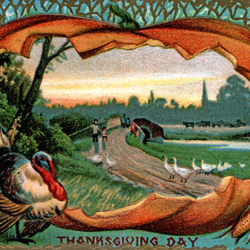The late Scottish author J.M. Barrie once quipped, “Nothing is really work unless you would rather be doing something else.” At the opposite end of the spectrum, some people say they love their profession so much they’ve never actually worked a day in their life. At the very beginning of my career as a financial advisor, my perspective would have aligned with Mr. Barrie. Now, after nearly 20 years in the industry, work feels more like a calling and a blessing. My first couple of years were miserable. It was constant rejection and hard not to feel like a failure. I often told my wife that I would quit as soon as everyone knew that “I had made it.”
 Thankfully my wife encouraged me long enough to reach the end of the tunnel.
Thankfully my wife encouraged me long enough to reach the end of the tunnel.
By the time I finally experienced some success, I realized I would be foolish to quit. Today I approach work with more joy and less stress because our incredible team has empowered me to focus more of my time, focus, and energy on my strengths, what Patrick Lencioni would refer to as my areas of working genius.
The basic premise in The 6 Types of Working Genius, A Better Way to Understand Your Gifts, Your Frustrations, and Your Team is that we tend to have two working geniuses, two working competencies, and two working frustrations.
The concept is easy to remember with the acronym, WIDGET, which stands for Wonder, Invention, Discernment, Galvanization, Enablement, and Tenacity. Applying this assessment to yourself, your spouse, children, family members, board members, and work colleagues can be transformative. Our team has recently gone through this assessment. It has led not only to self-discovery but to a more productive team. I’ll highlight some of what we’ve learned and how we’ve applied it.
 My two working geniuses are Wonder and Discernment.
My two working geniuses are Wonder and Discernment.
My two areas of competency—I can perform these activities well, but if they dominate my focus, they still wear me out—are Invention and Enablement. My two working frustrations are Galvanization and Tenacity. As a wonderer, my head is often in the clouds. I like to ask lots of questions about new possibilities, improvements, and outside-the-box thinking. I’m a visionary. I like to look further into the future than most people. When I first started making Roth IRA contributions, I was fascinated by the idea that this money could grow tax-free not only over my lifetime but over the lifetimes of my great-grandchildren if I were to name them as beneficiaries. Keep in mind that I was only 22 years old and didn’t even have children yet.
The government has since modified the rules for non-spousal IRA beneficiaries, but you get the picture. As a discerner, I’m able to determine whether the inventor’s ideas and plans are sound, foolish, or need to be tweaked. I feel very comfortable assessing the pros and cons of a potential decision and determining the appropriate course of action.
After a decision has been made, however, I rapidly lose steam. I need a galvanizer to rally the troops and inspire the team to follow through and implement the plan. Thankfully, one of my partners is an Army veteran who has led troops into battle and galvanization is one of his working geniuses! We also have some on our team who are Enablers, who step up and help with any task necessary. No detail is too small. Things don’t fall through the cracks. Clients aren’t overlooked. Finally, there comes Tenacity. This person can take a project over the finish line and ensure great ideas and projects are completed promptly. This is my biggest working frustration. When we hosted a movie event recently at the Polk Theatre, I just showed up. What a relief to me to have others take care of the details—invitations, reservations, decorations, food, candy, etc.
 I am learning to focus more and more on Wonder and Discernment elements and relying on other team members to cover my areas of working frustration.
I am learning to focus more and more on Wonder and Discernment elements and relying on other team members to cover my areas of working frustration.
It doesn’t mean that I am able to ignore these areas entirely, but it has helped our team tremendously to recognize where we each thrive and where we struggle. As you can imagine, conflict can arise when working (or living) with someone whose area of working frustration is your area of genius and vice versa. My wife’s two areas of working frustration are my areas of genius. Picture me sipping a cup of tea alone in my living room, underlining a book about Abraham Lincoln’s political genius in an otherwise chaotic environment with five needy kids clamoring for mama because they’ve given up getting dad’s attention, who seems to be deep in thought about something.
Suddenly I emerge from my Zen-like state and tell my wife, “I have a great idea!” You all know how that story unfolds. Moms, you are right to be shaking your heads at me, knowing that I should have been helping with the dishes, folding some clothes, getting kids ready for school, sports, or some other activity. The bigger point, though, which my very different and incredible wife would acknowledge with me, is that we make a great team together.
I see things as a Wonderer that she can’t see, and she sees things as an Enabler that I can’t see. But we must see things in the clouds AND the weeds. I’m better at planning for retirement, and she’s better at making sure our house doesn’t burn down. Case in point, the time when our first two kids were around 2 and 4, the neighbors called my wife and said the kids wandered down the sidewalk while I was supposed to be watching them. I’m sure I was wondering about something very important!
Socrates said, “The unexamined life is not worth living.” Whether you are still working, semi-retired, or retired, I encourage you to take the 10-minute assessment Patrick Lencioni’s team has developed at workinggenius.com. It could transform your working and personal relationships in a powerful way. I’d love your feedback.
January 2023

 My two working geniuses are Wonder and Discernment.
My two working geniuses are Wonder and Discernment. I am learning to focus more and more on Wonder and Discernment elements and relying on other team members to cover my areas of working frustration.
I am learning to focus more and more on Wonder and Discernment elements and relying on other team members to cover my areas of working frustration.


